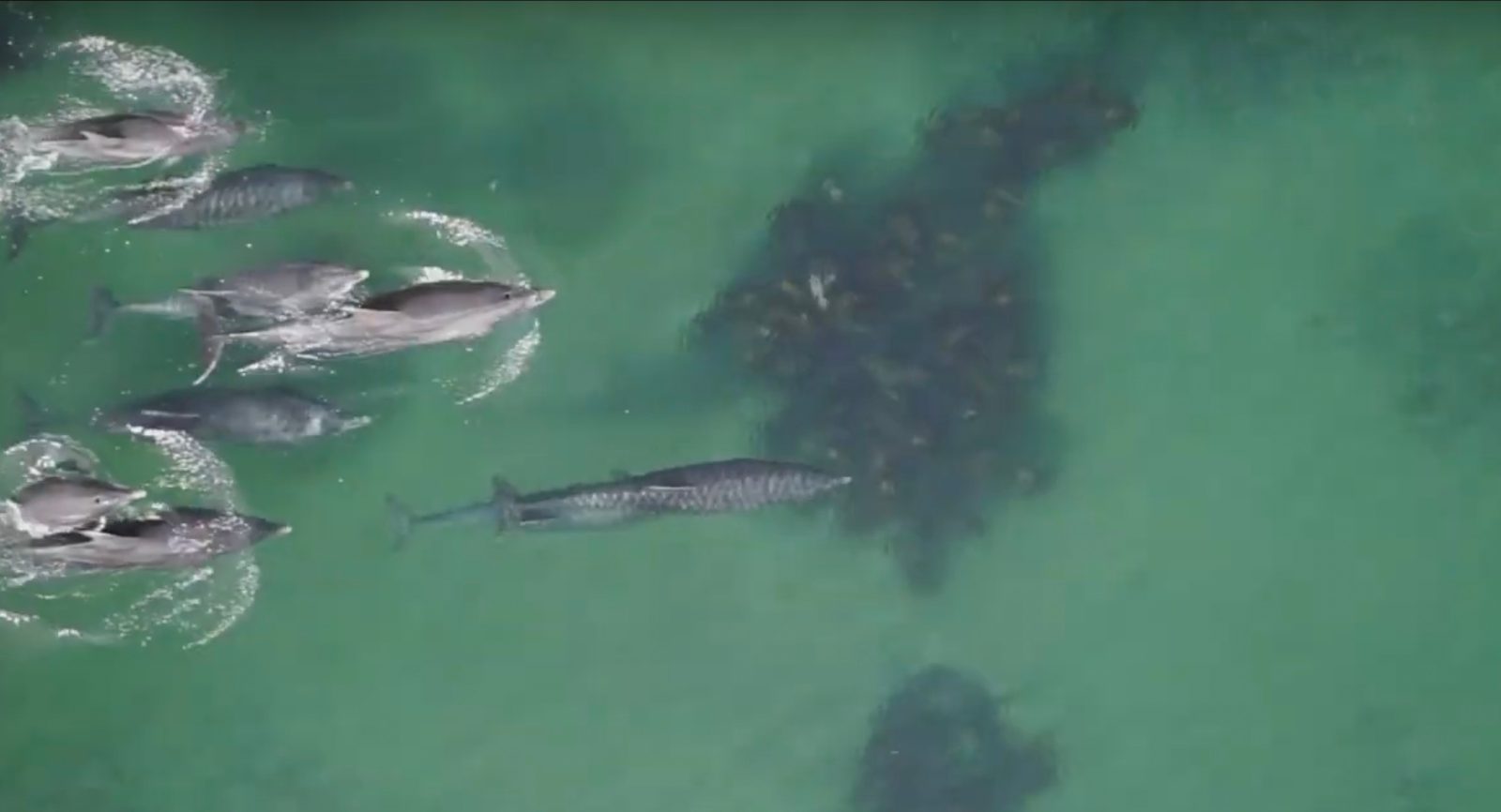
Opponents of UAVs claiming the tech poses a threat to personal privacy will dismay at this news. Scottish researchers have deployed drones to differentiate pregnant females from others in populations of dolphins. Thus far none of the Ms. Flippers has objected.
The identification process was part of a project between scientists from Scotland’s Aberdeen University and Duke University’s Marine Robotics and Remote Sensing Laboratory. The Scottish contingent has studied local bottlenose dolphins in the Moray Firth Special Area of Conservation for over three decades, and recently added drones to their mix of tools to identify pregnant females and monitor procreation rates. Use of the aerial tech not only proved less invasive than previous methods, but also were far more precise in determining which individuals were carrying calves – and which of those successfully gave birth later.
Before deployment of drones, Scottish experts had to trail dolphins in boats and make eyeball estimates of which were pregnant, then wait to see which among them indeed turned up several months later with offspring. Flying UAV from skiffs, the researchers could rely on cameras and sensors to distinguish porpoises from one another, and get precise measurements to determine which of the females were in the family way. Using that initial identification data in spotting the pods several months later, meanwhile, observers were able to see which expecting mothers turned up with heathy calves in tow.
“The main aim of the study was to explore whether we could remotely determine pregnancy status from aerial photographs taken using an unoccupied aerial system or drone,” explained Barbara Cheney, a research fellow Aberdeen University’s School of Biological Sciences. “Similar studies have been carried out for larger whales, but as far as we know this is the first time it has been done for small cetaceans.”
The report the Scottish group published provided an idea of just how much more efficient sensor-equipped drones were in detecting pregnant dolphins within larger groups. Whereas previous educated speculating produced an understandably sizeable number of errant designations (or missed mothers that were expecting), using UAVs the Aberdeen researchers only made one misidentification among 15 dolphins tagged as pregnant within an overall pod of 64 individuals.
“By using aerial photos this will allow us to routinely monitor changes in reproductive success in this protected bottlenose dolphin population, supporting conservation,” Cheney explained. “Data on failed pregnancies could provide information on how healthy a particular dolphin is as well as helping to identify the causes of changes in the population”
She said that in addition to the far greater precision of data that sensors on drones delivered, the UAVs themselves were also better suited for observing dolphins – pregnant and otherwise – than surface-level humans.
“Gathering information is particularly challenging in cetaceans that are highly mobile and spend much of their time underwater,” Cheney said. “This study will provide us with a wealth of new data to further improve our knowledge and understanding of reproductive success in bottlenose dolphins.”
FTC: We use income earning auto affiliate links. More.



Comments